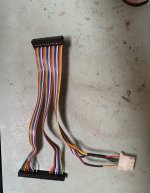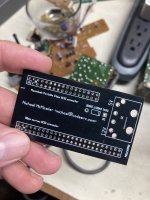Corsair911
New Member
I recently acquired a Macintosh Portable (Back-lit) over the internet. The person told me that the battery was dead and I was going to have to replace it, so when I got the battery, I hooked it up to the mac portable, and got it running. The thing is that I cant seem to boot from the hard-drive when it turns on, it has to spin up and down about 10 times at the least to get the hard drive to "Click", and start to boot up. Usually if it cant get the hard drive to boot in a certain amount of time, it shows the "?" Disk sign. Is this usual for this to happen? What can I do to make it boot up faster and in less time?
Also, sometimes when I power it up the hard drive makes squeaking noises. Could this correspond with the question above?
hope I posted in right spot
Also, sometimes when I power it up the hard drive makes squeaking noises. Could this correspond with the question above?
hope I posted in right spot



